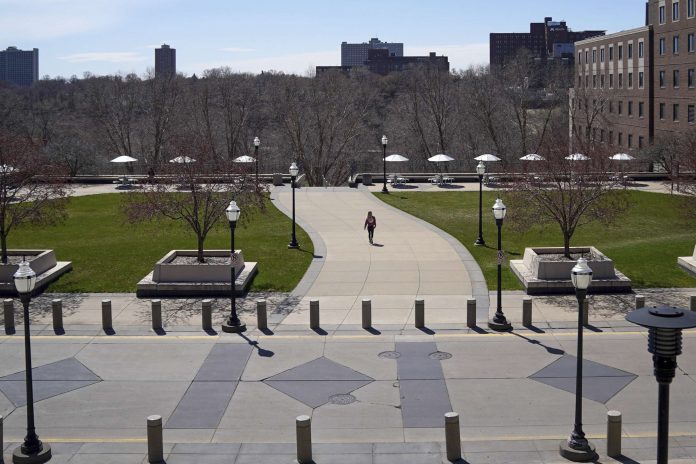
Associated Press
MINNEAPOLIS (AP) — The University of Minnesota should hire more Native American faculty, offer students additional financial support and give back land to atone for its historic mistreatment of the state’s tribes, a report conducted through a collaboration with the school concluded Tuesday.
The report said that the university’s founding board of regents “committed genocide and ethnic cleansing of Indigenous peoples for financial gain, using the institution as a shell corporation through which to launder lands and resources.”
Totaling more than 500 pages, the report marks the first time a major American university has critically examined its history with Native people, said Shannon Geshick, executive director of the Minnesota Indian Affairs Council and a member of the Bois Forte Band of Chippewa.
The report is the result of a collaborative effort between the council and the university called the TRUTH Project — short for Towards Recognition and University-Tribal Healing — which has received funding from the Mellon Foundation, Minnesota Public Radio reported.
“The TRUTH Project just rips that open and really reveals a narrative that a lot of people I think just don’t know,” Geshick said.
The effort draws on archival records, oral histories and other sources to examine through an Indigenous lens the troubled history between Native people and the state’s flagship university. The university stopped short of saying whether it would adopt the recommendations but thanked researchers in a statement for what they called their “truth-telling.”
The project started following a series of reports in the publication High Country News in 2020 revealing how universities around the country were founded on the proceeds of land that was taken from tribes through the 1862 Morrill Act.
That included a financial bonanza — dubbed the “Minnesota windfall” — that channeled more than $500 million to the fledgling University of Minnesota from leases and sales of land taken from the Dakota tribe after the federal government hanged 38 Dakota men in Mankato, Minnesota, in December 1862, ending the U.S.-Dakota war.
Meanwhile, it found that the university’s permanent trust fund controls roughly $600 million in royalties from iron ore mining, timber sales and other revenues derived from land taken from the Ojibwe and Dakota tribes.
The report also found that the university had failed to teach a full history of the land on which it was founded and raised questions about how some medical research was conducted.
The university has taken meaningful steps toward addressing some of their concerns, tribal leaders said. In 2021, the university created a program that offers free or substantially reduced tuition to many enrolled members of the state’s 11 federally recognized tribes.
University of Minnesota President Joan Gabel, who is leaving to take over the University of Pittsburgh, created high-level positions within her administration focusing on Native American issues and tribal relations, and held quarterly, face-to-face meetings with tribal leaders. But Geshick, along with the Minnesota Indian Affairs Council, said a lot more could have been done.
For example, she and others have called for an expansion of the scholarship program, which has been criticized for only benefiting a fraction of Native students.
“It’s a great start. But it shouldn’t be the end,” said Robert Larsen, president of the Lower Sioux Indian Community and chair of the Minnesota Indian Affairs Council.



















